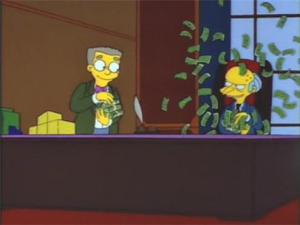On January 12, Netflix released another Friday premiere – a heist film with the laconic title “Take Off” directed by F. Gary Gray. The release of the film was planned back in August last year, but due to Hollywood strikes it had to be postponed. In this review, we’ll tell you why you’ve already seen this film, even if you haven’t watched it yet, and why on earth this doesn’t prevent you from getting the necessary portion of guilty pleasure.
Pros:
good dynamics; humor takes up a minimum of space, but on the whole it shoots out; nice cast; absence of unnecessary dramatic twists and turns (only hints at the complex romantic past of the main characters); compact timing prevents the viewer from getting tired; the lack of big ambitions plays into the hands of this project
Minuses:
a completely derivative and absurd story about a tough team planning the next “robbery of the century”; questionable special effects; general unpretentiousness of the plan
“Takeoff” / Lift
Genre heist film
Directed by F. Gary Gray
Cast: Kevin Hart, Gugu Mbatha-Raw, Vincent D’Onofrio, Ursula Cobrero, Billy Magnussen, Burn Gorman, Jacob Batalon, Sam Worthington, Jean Reno
Netflix premiere
Year of manufacture 2024
IMDb website
Cyrus Whitaker is a professional thief who leads a ragtag team of experts to steal real works of art. His ex-girlfriend Abby, an Interpol agent, tries to put the scoundrel behind bars, but receives an unexpected order from a strict boss. He forces his subordinate to recruit Cyrus and his friends to steal $500 million in gold belonging to billionaire Lars Jorgenson. The latter plans to pay this amount to hackers in order to, believe it or not, get rich, but his evil plan involves the death of many innocent people.
In exchange for the thieves’ services, Abby offers immunity from liability for past escapades. But their task is complicated by the fact that the gold bars are delivered on a passenger plane, so the already complex heist will take place at an altitude of 12,000 meters, somewhere among the carefree European clouds between London and Zurich.
After reading the synopsis, at least two natural questions may immediately arise. Is it really as crazy as it appears on paper? And doesn’t the local plot remind you of the plots of other films, in particular, of one very famous franchise? Hint – there are a lot of bald, muscular men (at least four), implausible action scenes and tirades about family. And yes, these were rhetorical questions.
“Take Off” offers another story about an outstanding company of thieves in the spirit of the famous Steven Soderbergh trilogy. Only instead of Soderbergian sophistication, the viewer is offered flights of the late afterburner kind, both from the point of view of the absurdity of what is happening on the screen and the unrealism of what is depicted.
Oddly enough, even such factors do not prevent you from getting your share of “shameful pleasure” from this, let’s be honest, unpretentious spectacle.
Director Felix Gary Gray once directed the eighth Fast and the Furious movie, which grossed over a billion dollars worldwide, and the latter’s adrenaline-fuelled style is clearly visible here. True, not so much at the level of adventures of the eighth part, but of the fifth or sixth. The fifth, if you remember, was also about an allegedly clever robbery (there will even be an identical twist here), and in the sixth the motivation was also based on an amnesty for the suffering. There’s no need to even remind you about the bizarre somersaults of airplanes, but the main thing is that it all still looks quite exciting.
But the director’s creative legacy is not alone in “Fast and the Furious.” It’s much more important to remember that more than 20 years ago he worked on the cool “The Italian Job,” which, along with “Oceans,” became a successful remake of a fairly forgotten movie from the 60s. Obviously, this experience has helped F. Gary Gray to this day. That’s why even something as weak as “Take Off,” whose narrative echoes “The Heist” and begins in Venice, can look good.
It is possible to achieve a conditionally acceptable result thanks to good dynamics, because you definitely won’t be bored while watching.
The impression is also improved by the pleasant cast, who have nothing really to play, but here this is even for the better, since there is no need to be distracted by pseudo-dramatic collisions. Jean Reno appears to have visited the set for coffee. This is Vincent D’Onofrio’s second project in a week. Kevin Hart, who is used to playing fools, behaves unusually with restraint, but this time there were no trademark antics.
Another factor played a role in the perception of the film: the previous, most high-profile Netflix projects had extraordinary ambitions and a completely frowning expression on their faces. For example, the latest Zack Snyder dared to encroach on the laurels of a real monster of the industry, Star Wars, and received a slap in the face from both critics and viewers. Another blockbuster, Mission Stone, was marketed as something like Mission: Impossible, but was disgracefully destroyed by the public (including us), so such comparisons now sound funny.
The frivolous “Take Off” in no way claims to be the “new Danny Ocean”, and therefore does not fall victim to inflated expectations. Even before viewing, the viewer can roughly understand what type of movie awaits him. And although it turned out to be banal, with all these damn familiar lines “I’m in, so am I” or “Mi-San, your way out,” it was, however, quite exciting and moderately funny so as not to greatly regret the time spent.
Conclusion:
“Take Off” is 100% fast food from cinema, and the paradox is that even such a product has its own undeniable benefits.


